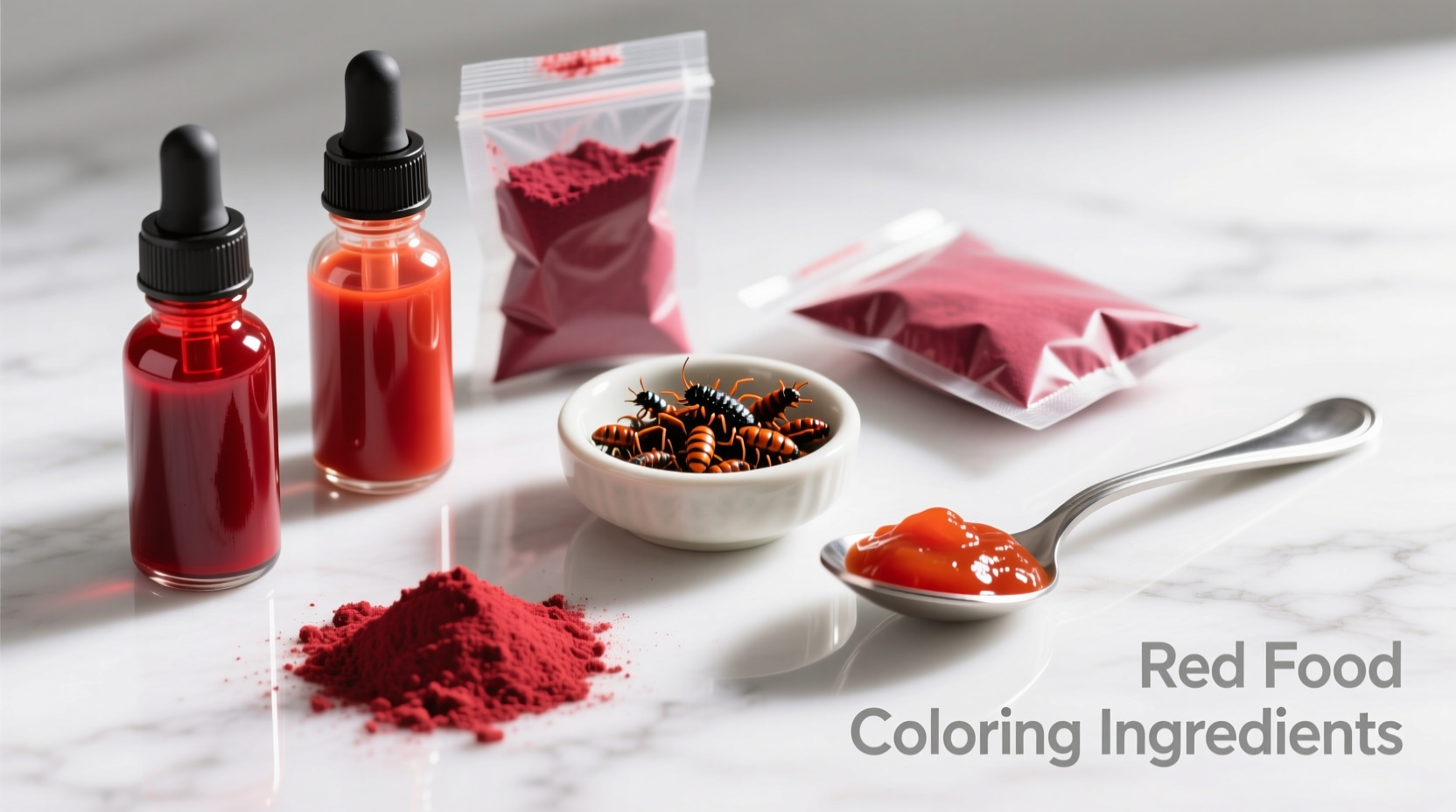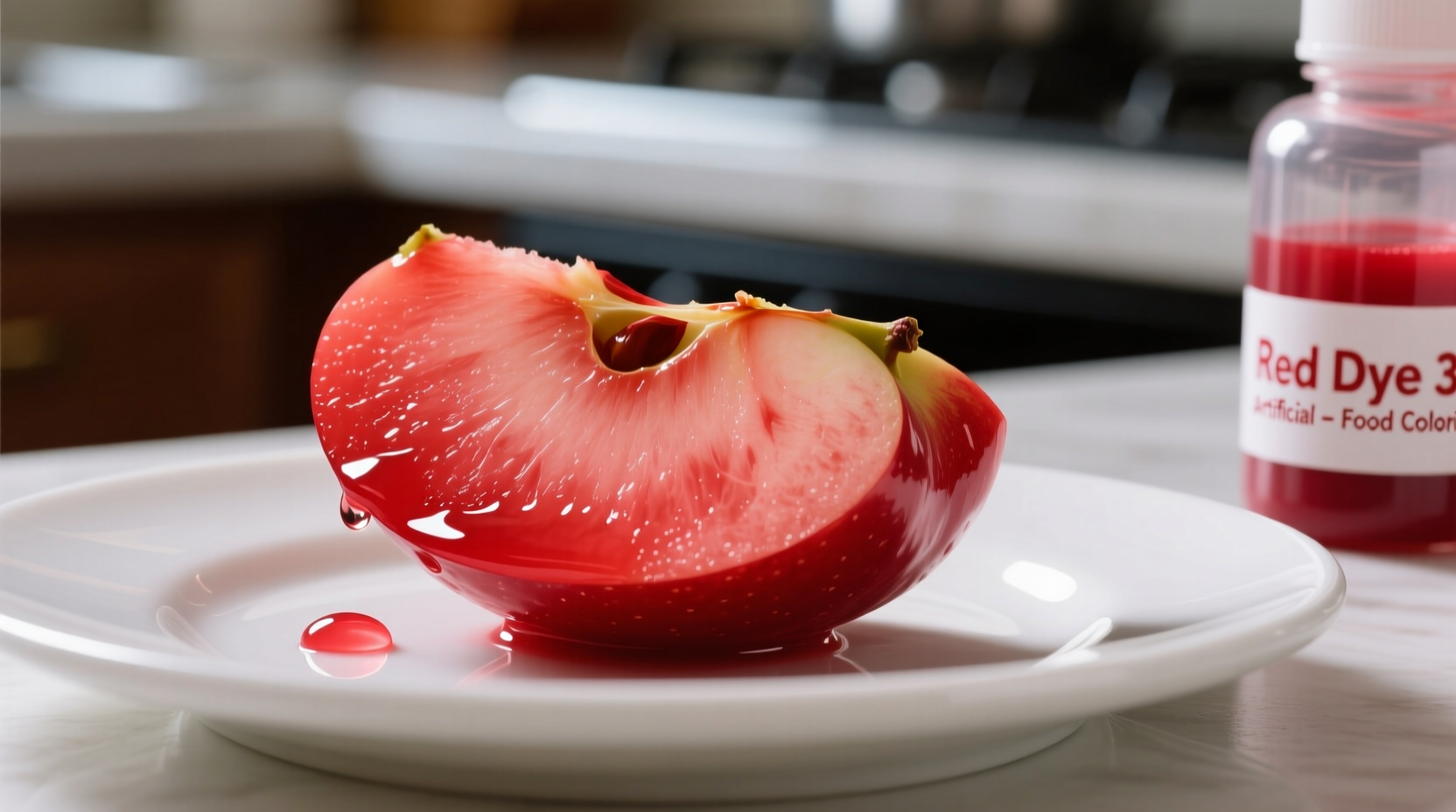Understanding Red Dye 3 in Your Food
When you're searching for what food has red dye 3, you're likely concerned about ingredients in your pantry or trying to avoid specific additives. Red Dye 3, scientifically known as Erythrosine (FD&C Red No. 3), is a synthetic xanthene dye that provides a vibrant cherry-red color to numerous food products. Unlike its more common cousin Red 40, Red Dye 3 has faced stricter regulations in some regions while remaining approved for limited use in others.
Common Food Products Containing Red Dye 3
While many manufacturers have shifted to alternative colorings, Red Dye 3 still appears in specific product categories where its unique stability properties are valued. The following table identifies where you're most likely to encounter this coloring agent:
| Food Category | Specific Products | Why Red Dye 3 Is Used |
|---|---|---|
| Candies & Chewing Gum | Cherry-flavored Life Savers, some gum brands | Maintains color stability when exposed to light |
| Baked Goods | Cake decorations, red velvet cake mixes, icing | Resists fading during baking process |
| Fruit Snacks & Preserves | Some strawberry and cherry-flavored snacks | Provides consistent color in acidic environments |
| Beverages | Certain cherry-flavored sodas and cocktail cherries | Doesn't degrade in high-sugar solutions |
| Medical Products | Some cough syrups and lozenges | Stability in pharmaceutical formulations |
Regulatory Timeline: The Shifting Status of Red Dye 3
Understanding the regulatory history of Red Dye 3 provides crucial context for why it appears in some products but not others. This timeline reveals how scientific understanding has evolved:
- 1931: FDA first approves Red Dye 3 for food use
- 1990: FDA bans Red Dye 3 in cosmetics and externally applied drugs after studies showed thyroid tumors in male rats (FDA Red 3: Erythrosine)
- 2011: European Food Safety Authority re-evaluates Red Dye 3, maintaining restrictions on usage levels
- 2020: California passes legislation requiring warning labels on foods containing Red Dye 3 by 2025
- Present: Still permitted in limited food applications in the US but banned in the EU for most food uses
How to Spot Red Dye 3 on Food Labels
When examining products to determine what food has red dye 3, check ingredient lists for these specific terms:
- "FD&C Red No. 3"
- "Erythrosine"
- "E127" (European food additive code)
Be aware that products labeled "artificial colors" may contain Red Dye 3 among other dyes. Unlike natural colorings derived from fruits and vegetables, synthetic dyes like Red Dye 3 must be explicitly listed by their specific names.
Comparing Red Dye 3 to Other Red Colorants
Not all red food colorings are created equal. Understanding the differences helps when identifying which foods contain red dye 3 versus alternatives:
| Colorant | Common Applications | Regulatory Status | Stability Characteristics |
|---|---|---|---|
| Red Dye 3 (Erythrosine) | Candies, baked goods, some beverages | Restricted use in US; banned in EU for most foods | Stable in light and acidic conditions |
| Red Dye 40 (Allura Red) | Soft drinks, candies, gelatin desserts | Widely approved globally | Less stable in light than Red 3 |
| Beet Juice (Natural) | Yogurts, ice creams, health-focused products | Generally recognized as safe worldwide | Fades quickly when exposed to light |
| Cochineal (Carmine) | Yogurts, juices, cosmetics | Approved with labeling requirements | Heat-stable but sensitive to pH changes |
Natural Alternatives to Red Dye 3
As consumer demand grows for products without synthetic colors, many manufacturers are turning to natural alternatives when addressing what food has red dye 3 alternatives. These natural options provide similar visual appeal without the regulatory concerns:
- Beetroot juice: Provides a deep red hue but fades quickly
- Pomegranate juice concentrate: Offers rich color with antioxidant benefits
- Radish extract: Stable in acidic conditions similar to Red Dye 3
- Cherry juice concentrate: Delivers natural cherry flavor along with color
These alternatives often require higher concentrations to achieve similar color intensity, which can affect product taste and cost. Companies specializing in natural food colorings continue to develop more stable plant-based options that better mimic the performance of synthetic dyes.

Practical Tips for Avoiding Red Dye 3
If you're researching what food has red dye 3 to avoid it, consider these actionable strategies:
- Choose products labeled "no artificial colors" or "naturally colored"
- Opt for darker red fruits like cherries or raspberries instead of artificially colored alternatives
- Check ingredient lists on medications and supplements, as Red Dye 3 appears in some pharmaceutical products
- Make homemade versions of products like icing or fruit snacks using natural color sources
- Look for products certified by third-party organizations like NSF or ConsumerLab for additive verification
Consumer Sentiment and Market Trends
Recent market research reveals evolving consumer attitudes toward synthetic food dyes like Red Dye 3. According to a 2023 survey by the International Food Information Council, 68% of consumers actively try to avoid artificial colors in their food. This growing concern has prompted major food manufacturers to reformulate products, with many replacing Red Dye 3 with natural alternatives. The clean label movement continues to gain momentum, particularly among parents seeking to limit their children's exposure to synthetic additives.
Frequently Asked Questions
Is Red Dye 3 still used in food products today?
Yes, Red Dye 3 remains approved for limited food uses in the United States, particularly in cherry-flavored candies, baked goods, and some beverages. However, many manufacturers have voluntarily replaced it with alternatives due to consumer demand and regulatory pressures in certain states.
Why is Red Dye 3 banned in some countries but not others?
Regulatory decisions about Red Dye 3 vary based on different interpretations of scientific evidence. The European Union has stricter regulations due to concerns about potential health effects, while the FDA maintains that current usage levels in food are safe based on available evidence, though it banned Red Dye 3 in cosmetics in 1990.
How can I identify products containing Red Dye 3?
Check ingredient labels for "FD&C Red No. 3," "Erythrosine," or "E127" (in European products). Products labeled simply as containing "artificial colors" may include Red Dye 3 among other dyes. Cherry-flavored candies and red-colored baked goods are most likely to contain it.
Are there health concerns associated with Red Dye 3?
Some studies have raised concerns about potential thyroid effects, particularly at high exposure levels. The FDA maintains that current permitted usage levels are safe for consumption, while the European Food Safety Authority has set stricter limits. Individuals with known sensitivities may experience adverse reactions.











 浙公网安备
33010002000092号
浙公网安备
33010002000092号 浙B2-20120091-4
浙B2-20120091-4